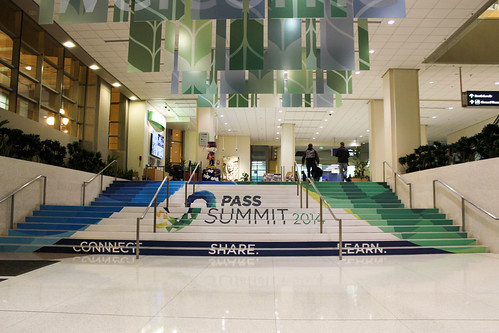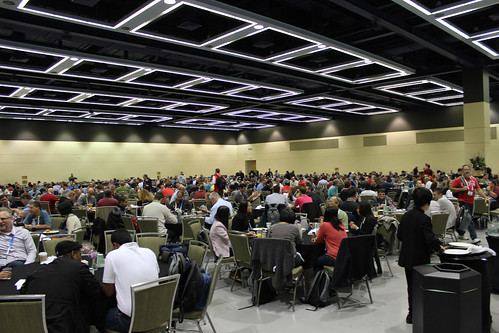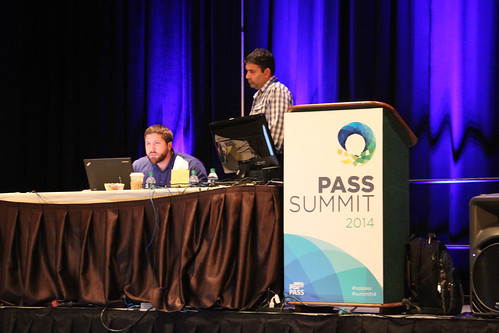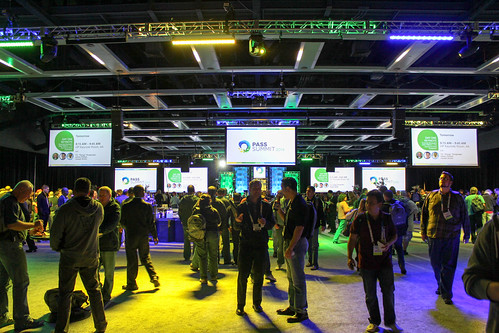
Sadly this was the last day of the Pass Summit, but I think I was my most favorite day. First of all it didn't rain, it turned out to be a nice day.
08:00 AM - 09:15 AM
Data Partitioning for Database Architects and Mere Mortals [AD-303]
Speaker(s): Dmitri Korotkevitch
Data partitioning is an essential technique that simplifies database administration tasks, improves system availability and reduces the cost of the solution. Contrary to popular belief, data partitioning is not limited to partitioned tables and the Enterprise Edition of SQL Server.
This session demonstrates the data partitioning techniques available in the various editions of SQL Server. It discusses benefits, downsides and the best use-cases for partition tables, local and distributed partitioned views and stretch databases. The session will also demonstrate how data partitioning helps boost performance of systems handling a mixed workload, improves cardinality estimations with large tables, and reduces the system’s storage cost.
Finally, the session provides a set of guidelines on how to split the data between relational and non-relational storages in OLTP and IoT systems hosted in the Cloud.
The room was packed and I had to stand in the back...it also didn't help that this ession was on level 2, it took me a while to find this room
This session was okay, I knew most of the stuff covered, below are two slides that give a summary between native partitioning and partitionmed view
09:30 AM - 10:45 AM
Chalk Talk with Azure SQL Database PM Team [AD-501-M]
Speaker(s): Tomas Talius Lindsey Allen
Join us in an open dialog with Microsoft Partner Architect Tomas Talius and members of the Azure SQL Database team. Don't miss this unique opportunity to ask the hard questions. Seating is limited to 50 attendees so arrive early. Chalk Talk sessions are not recorded.
This and the session after this one were my two favorite sessions. A couple of big announcement.. First CTP of the next version of SQL Server will drop next month, this includes both the Linux as well as the Windows version
SQL Injection detection
SQL Server optimizer has machine learning built in
SQL Graph (Think Neo4J) SQL Graph adds graph processing capabilities to SQL Server
Adaptive Query Plan
There will be a big announcement about SQL Server Standard Edition on November 15th.... mmmm maybe the ability to use more memory? We will have to wait and see what will be announced
I will go into some of these announcements into more details in a separate blog post. That post can be found here:
Some cool SQL Server announcements SQL Graph, Adaptive Query Plan, CTP1 of SQL vNext, SQL Injection detection
Here is a picture of the team... after I posted this I got a funny comment from Adam Machanic (see below picture)
11:00 AM - 12:15 PM
Chalk Talk with the SQL Server Team [DBA-501-M]
Speaker(s): Lindsey Allen Jakub Szymaszek Jovan Popovic Kevin Farlee Tomas Talius Sunil Agarwal Joseph Sack
More or less the same concept as the session before it.
02:00 PM - 03:15 PM
Go, Go, QueryStore! [DBA-210]
Speaker(s): Gail Shaw
One of the hardest things to do in SQL is to identify the cause of a sudden degradation in performance. The DMVs don’t persist information over a restart of the instance and, unless there was already some query benchmarking (and there almost never is), answering the question of how the queries behaved last week needs a time machine. Up until now, that is. The addition of the QueryStore to SQL Server 2016 makes identifying and resolving performance regressions a breeze.
In this session we’ll take a look at what the QueryStore is and how it works, before diving into a scenario where overall performance suddenly degraded, and we’ll see why QueryStore is the best new feature in SQL Server 2016, bar none.
Gail Shaw did a good job giving an overview of the Querystore and how one might use it
03:30 PM - 04:45 PM
Microsoft R for the Architect [BIA-323-M]
Speaker(s): Buck Woody
This was the last session, if you have never been to a Buck Woody presentation..you are missing something
In this hands-on workshop you’ll cover a series of modules that guide you from a review of the R programming environment, the Cortana Intelligence Suite Process, the Cortana Intelligence Suite Platform, to the Microsoft R platforms including: Microsoft Open R, the Microsoft R Client, Microsoft R Server, SQL Server with R Services, R in Azure ML, and HDInsight with R. Final lab is an SQL Server R Services solution.
Buck gave a nice overview of R Services and data science on the Microsoft stack
And this was taken on my way to the hotel after all the sessions were done :-(
































